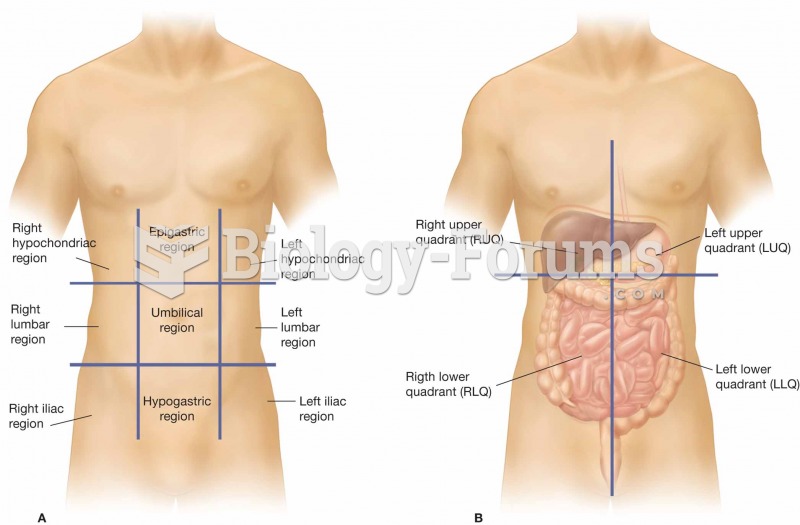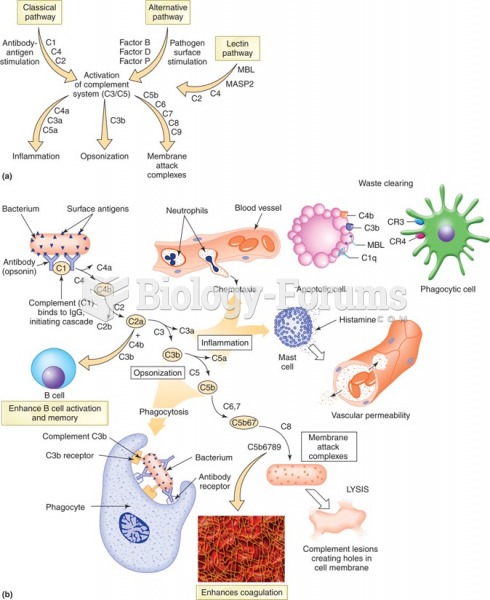|
|
|
Egg cells are about the size of a grain of sand. They are formed inside of a female's ovaries before she is even born.
Adult head lice are gray, about ? inch long, and often have a tiny dot on their backs. A female can lay between 50 and 150 eggs within the several weeks that she is alive. They feed on human blood.
Pink eye is a term that refers to conjunctivitis, which is inflammation of the thin, clear membrane (conjunctiva) over the white part of the eye (sclera). It may be triggered by a virus, bacteria, or foreign body in the eye. Antibiotic eye drops alleviate bacterial conjunctivitis, and antihistamine allergy pills or eye drops help control allergic conjunctivitis symptoms.
More than 20 million Americans cite use of marijuana within the past 30 days, according to the National Survey on Drug Use and Health (NSDUH). More than 8 million admit to using it almost every day.
After 5 years of being diagnosed with rheumatoid arthritis, one every three patients will no longer be able to work.
 (A) The nine regions of the abdominopelvic cavity. (B) The four regions of the abdomen, which are re
(A) The nine regions of the abdominopelvic cavity. (B) The four regions of the abdomen, which are re
 Three pathways of complement combined. (a) Figure shows a summary of how each pathway proceeds. (b) ...
Three pathways of complement combined. (a) Figure shows a summary of how each pathway proceeds. (b) ...
 Punnett square of the dihybrid cross shown in Figure 3.8. There are two combinations of dominant and
Punnett square of the dihybrid cross shown in Figure 3.8. There are two combinations of dominant and




